
Metallyticus is a genus of praying mantis. It is the only genus in the monotypic family Metallyticidae. They are mostly found in South-East Asia. The species of the genus are dark, somewhat flattened and cockroach-like, and often with a cuticle that is reflective and metallic in appearance.

Hymenopodidae is a family of the order Mantodea (mantises), which contains six subfamilies. Some of the species in this family mimic flowers and are found camouflaged among them; these are called flower mantises. Their coloration is aggressive mimicry, luring prey to approach close enough to be seized and eaten.
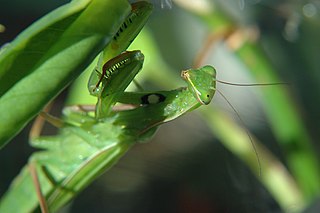
The genus Mantis is in the family Mantidae, of the mantis order Mantodea.

Deroplatys is a genus of mantis in the family Deroplatyidae. They are native to Asia and several share the common name of dead leaf mantis.
Hierodula aruana is a species of praying mantis in the family Mantidae.
Hierodula dyaka is a species of praying mantis in the family Mantidae.
Hierodula harpyia is a species of praying mantis in the family Mantidae.
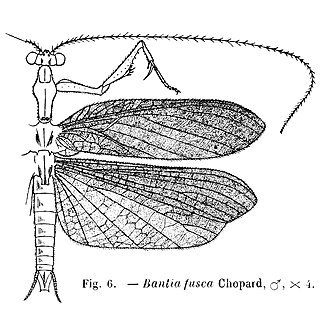
Thespidae is a family of insects in the order Mantodea. Following a major revision of this order in 2019, the old-world subfamilies Haaniinae and Hoplocoryphinae, previously placed here, have been upgraded to family level. Many genera are Neotropical, but the Thespinae are represented in Africa, Asia, Europe, and North America.
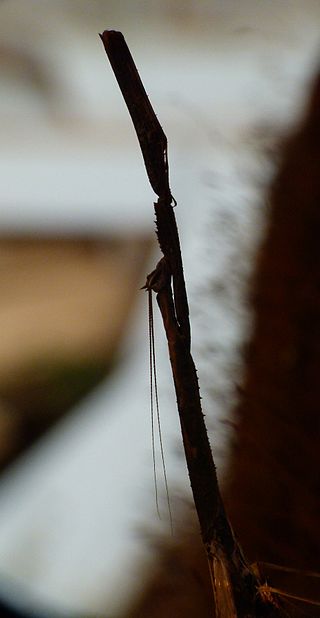
Toxoderidae is a family of praying mantises.
Fulcinini is an Australian praying mantis tribe in the subfamily Fulciniinae.
Deroplatyini is a tribe of the subfamily Deroplatyinae of the family Mantidae of Mantodea.
Fulcinia is a genus of praying mantises found in Australia. It is the type genus of the subfamily Fulciniinae and tribe Fulciniini.

Epaphroditidae is a family of the Mantodea, containing species found in Africa and the Caribbean. Before 2015, it had been placed as the subfamily Epaphroditinae, in the Hymenopodidae, but is now excluded.

Hapalopeza is an Asian genus of praying mantis in the family Gonypetidae. Two species, previously placed here, are now in the genus Spilomantis.

The Hierodulinae are a subfamily of praying mantids, originally used by Brunner von Wattenwyl. It was restored as part of a major revision of mantid taxonomy, and now contains genera previously placed elsewhere in the family Mantidae.
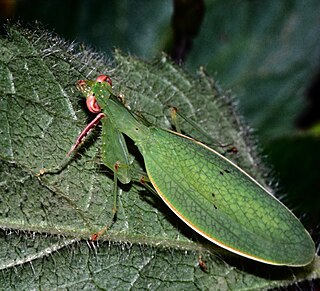
The Nanomantidae are a new (2019) family of praying mantises, based on the type genus Nanomantis. As part of a major revision of mantid taxonomy, genera and tribes have been moved here, substantially replacing the old family Iridopterygidae.

The Gonypetidae are a new (2019) family of praying mantids, based on the type genus Gonypeta. The name was created by Westwood and it has been revived as part of a major revision of mantid taxonomy; the subfamily Iridopteryginae having been moved here from the obsolete family Iridopterygidae. The Gonypetinae include Asian genera transferred from the obsolete taxa Amelinae and Liturgusidae.
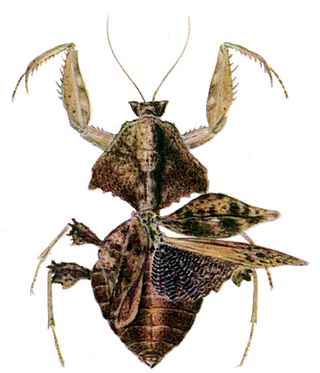
The Majangidae are a revived (2019) family of praying mantids from Madagascar.

Eomantis is a genus of praying mantis in the subfamily Tropidomantinae and tribe Tropidomantini, with species recorded from Asia.

Spilomantis is a genus of Asian praying mantids in the family Iridopterygidae. These species were long placed in the genus Hapalopeza, but after a review of type material at the Natural History Museum, London this genus name has been restored.














